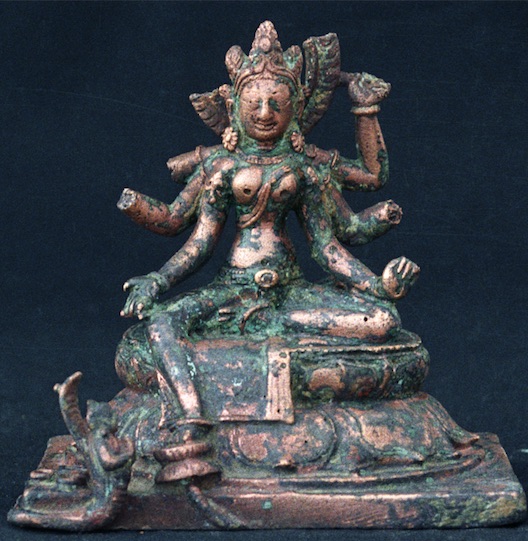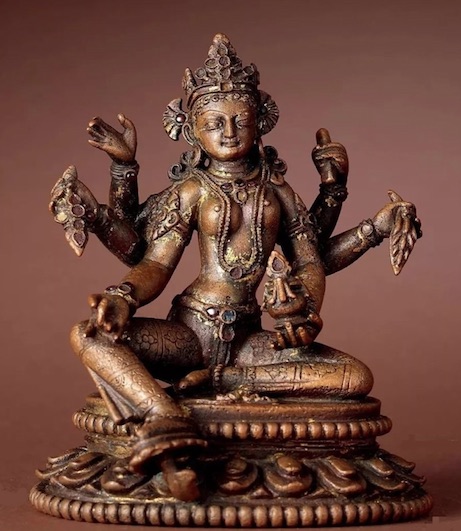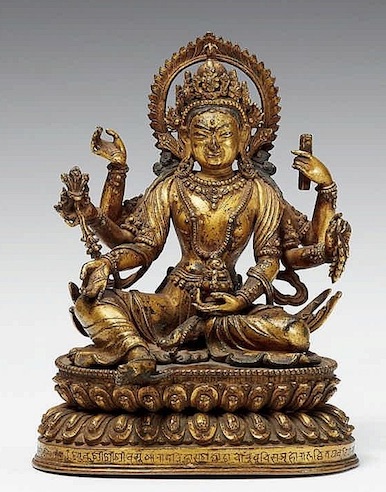Vasudhara, goddess of wealth and harvest, is particularly worshipped in Nepal, where portable sculptures usually depict her in her one-head (with three eyes) and six-arm form.
‘9th century, Nepal, Vasudhara, gilt copper, 10,5 cm, private collection’ according to Lost Arts of Nepal
The above wears a long dhoti with a stippled lotus print and a matching sash or scarf across her chest. It is most unusual for her to sit with both legs folded. We saw another example, on HAR (from the Potala collection, dated 10th/11th century in Buddhist Sculptures in Tibet Volume One, p. 487, pl. 154 C by Ulrich von Schroeder).
Undated (Transitional Period), Nepal, Vasudhara, (copper alloy?), Chabahil, Kathmandu (Nepal). Anonymous photographer, photo kindly provided by Ulrich von Schroeder.
She always raises her right hand as if to accompany music or singing, the next hand holds jewels, the lower right hand makes the gesture of supreme generosity and may hold a fruit or a lotus bud. Her left hands hold a book, a sheaf of grain, a long-life vase or a pot of jewels.
Undated (Transitional Period), Nepal, Vasudhara, (copper?), 9 cm, Chabahil, Kathmandu (Nepal). Photo by Sunil Dongol, 2010.
During the Transitional Period, crowns are usually made of a large central leaf and two smaller ones, and the lotus base often has distinctive flat, broad petals with an upturned pointed end.
’12th-13th century, Nepal, Vasudhara, gilt copper, 10,3 cm, private collection’ according to Lost Arts of Nepal
Undated, Nepal or Nepalese artist in Tibet? (labelled ‘Chinese’), gilt bronze, 9,8 cm, private collection, photo on invaluable
17th century, Nepal, Vasudhara (labelled ‘Avalokiteshvara’), gilt bronze with gems, 14 cm, private collection, Fine Chinese Art lot 330, 6th November 2008, Bonhams (London).
17th-18th century, Nepal, Vasudhara, gilt bronze, 18,3 cm, private collection, 9th September 2016 lot 14, Lempertz
The Malla Period crown is normally made of five leaves. The central one is larger than the rest and often rests on what looks like a crescent but is in fact a miniature Kirtimukha, or a garuda with jewelled vegetation in its mouth – a design derived from the original Kirtimukha in a cloudscape theme (see the article by Gautama V. Vajracharya ).







